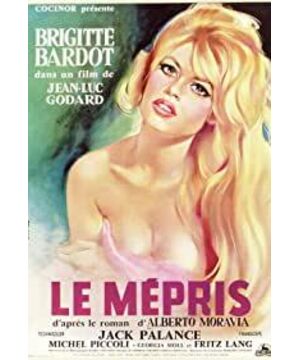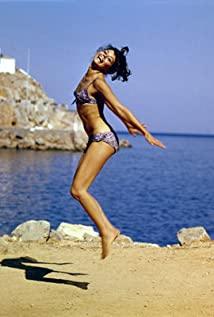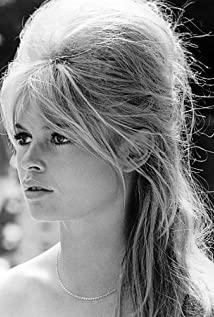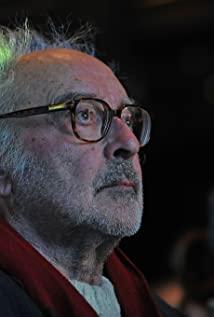At the ebb of the new wave, General de Gaulle's Fifth Republic had just ended the conflict in Algeria, the turbulent years after the war could be said to have just ended, and the Assassins' social culture and spiritual outlook finally had a breathing space, and their extensive changes had only just begun. Start. The new generation of writers represented by Anthony Mann, Nicholas Ray, and the new generation of writers represented by John Cassavetes pursue the ultimate realism, and the traditional narrative structure is constantly impacted. A new attempt to write represented by the new theory of fiction has influenced French cinema, resulting in Last Year at Marienbad, and against such a turbulent backdrop, the aesthetics of "Contempt" are purposefully planned It has not lost the proper connection between the "conservative" that pays tribute to the classics and the "innovation" that offends the classics, which Godard is best at.
This is a custom video that I'm interested in. This is the only time I feel like I can make a great movie on a big budget. - Godard
For Godard, the film is truly a "big production", Moravia's original novel, whose main character is usually a clear-headed and powerless middle-class intellectual, who is in Sartre's "Disgusting" and Canada Miao's "The Outsider" had previously expressed an existential unease: the loss of the ability to act, the guilt of one's own inaction, the constant and futile adaptation to a world that was moving away from him, the The boredom and indifference of life became Moravia's themes. Existential themes of this type are already present in Do As You Want. At the same time, there is Brigitte Bardot, a woman who "brings money into the group", her arrival attracted American producer Joseph E. Levine. Brigitte Bardot's salary was half of the budget, and in the future, we will also find that such an investment is undoubtedly completely correct.
Similar to "Exhausted", the entire film duration is completely compressed into two days. The whole film is divided into three parts, which respectively tell the dilemma of the classic movie, the death of the husband and wife relationship, and finally a sudden disaster
first part
It mainly introduces the protagonist and his party: the trio of screenwriters, producers, directors, Paul, Camille, expounding the relationship between husband and wife, the reality of the film world: "Italian cinema is in trouble" Italian Cinema City set and "Odyssey" sample film Screening and Fritz Lang. Fritz Lang carried all his identities into the film, Brigitte Bardot's glamorous and mysterious images inside and outside the film entered the film, and Michel Piccoli came from "Eyeliner". These people also make scenes in the film that refer to their past film careers.
Producer Prokosch first appeared on the set of the movie city like the apocalypse wasteland, lamenting the prosperity of the past and the desolation of the present "This is the end of the movie". And in the lens group that Prokosch first appeared in, it also used a combination of traversing long shots and short shots. It is amazing that the transition between scenes is extremely smooth. Godard created The rhythm is broken, and editing is omitted at all scene transition moments, so the long traverse and push-pull shots are mixed with short-shot interruptions, full of rhythm, thinking of the "Breathing" under the fast editing of the "Bourne Bourne" series. It is necessary to add such a very precise segmented short shot in the long shot. The long shot that takes dozens of minutes at every turn seems to have become a "lens length" way to show off the ability. The lens is pale.
Fritz Lang was suppressed by American producers and became an old man whose creativity was dying out. Godard never hesitated to let his beloved appear in the film. In reverence, Fritz Lang stepped out of the screening room, lit a cigarette, and, to the music, behind him were Hitchcock's Psycho, Howard Hawks' Hartley and Rossellini, Franz Like one of the gods, Ritz Lang walks slowly over the history and the present, watching the alternate montage of the statues of the gods in the screening room, while referring to Rossellini's "Journey to Italy" in the Naples Museum. , Just as Ingrid Bergman was shocked by the statue in "Italy", Godard used the same upside-down shooting, circular motion of the camera and music of the string orchestra in the "Film of the Movie" section, all imitating/paying tribute to Rossellini. Of course, the theme is very different from "Journey to Italy".
And Brigitte Bardot appeared on the screen in an extremely provocative posture at the beginning. Camille/Brigitte Bardot's body put its symbolic value and commodity value under the light. At the same time, this long shot uses a filter The light sheet is divided according to the three color tones of red, white and blue. In this opposite system between continuity and discontinuity, Brigitte Bardot's body is illuminated like a sculpture, desire rushes towards the audience, and Sacred, the audience's voyeurism destroys the intimate moment of the couple, and the audience's desire is directed to her round buttocks - to the most "sensual" and dull meat, which is the purest artificiality and utensil. What really yearns for is the physical pleasure of interdependence, and the way the Camilles meet has hinted at the relationship between the two, Godard exposes this desire, and at the same time isolates it from the characters in the film, the dialogue between the two It is also staggered, and there are interruptions in the music, especially after the prologue scene "talking about business" and "talking about private parts", as well as the huge break in the music in the Italian Film City after the completion of this long shot. The moment when the music exists, the husband and wife relationship is Harmonious, both the audience and Paul observe Camille's body in color and music, this moment is immersion, and the moment of rupture is when we re-examine, immerse and appreciate the body.
the second part
Focusing on the crisis of Paul and Camille's relationship, the "movie world" in the first part also exists - constantly stealing the scene by phone. The image of the goddess of wisdom turning her head to the couple and the explanation of the replacement itinerary of the image of the sea god all refer to "Journey to Italy", while placing the fate of the characters under the perspective of the gods. The tension and confrontation between husband and wife reached its peak. When the husband and wife relationship broke up, the voice-over suddenly inserted and the picture of happiness that passed away were like a quarrel. When the husband and wife began to miss the original time, they were either reconciled or completely broken, leaving only the past. I recalled it, and sure enough, a phone call after the seemingly reconciled once again shattered the illusion of a broken mirror and reunion. The confrontation on both sides of the lampstand (the large left and right lateral movement increases the sense of distance and alienation, and it is still in the role of cinemascope. stronger below),
Visualize the separation between husband and wife and the irreversible quality of Camille's attempt to escape this life. As mentioned earlier, this "bringing capital into the group" Brigitte Bardot is an important factor in the film's fame, first of all, her own star halo, as well as her extremely sexy body and "daring to take off" "the spirit of. In this part of the apartment shot group, she kept changing wigs, clothes, and colorful bath towels, covering her original naked body, but her extremely sexy body still remained attractive. She is bold and shy when she teases Paul in the first part (no facial expressions when talking about her private parts, only shy micro-motions and voices), while she confronts Paul in the middle and back parts with a single, The contempt of reading her own lines in a mechanical tone (contrasted with the background voice narration) completely irritated Paul, "Vulgar language is not for you", Brigitte Bardot's words turned the vulgar words into their own sorrow, while in the There was contempt for Paul in her words. This kind of contempt was indescribable and inexplicable, and she didn't know why she would despise this man she might have flirted with all her strength a day ago. It seemed fateful.
the third part
Came to the island of Capri, the film world officially intervened in the couple's life, Paul and Camille were in the process of filming a shot, the original character combination was reassigned, a slow letter reading shot, the confused Paul seemed to be in a dream It was as if he heard the sound of Camille reading the letter, and at the same time the sound of the accelerator and brake of the car. The continuous montage of dislocation of sound and picture was connected to a cruel shot. In this group of shots, Prokosch picked the roadside wildflowers and dedicated them to Camille. It is also a long traverse shot, and the structure and the alternation of the letter picture and the fast start of the car once again carried out the rhythm of the structure of the shot group. render. It is so fast and sudden, just like the death of Nana in "Do As You Like It", the farewell in the letter has already described the death, and the car stuck in the trailer is like a paragraph in the structure of the video: "The departure screen is presented in the paragraph of the farewell letter. "Same. As a result, Camille's group disappeared unexpectedly, and Paul left, leaving Fritz Lang alone to create the film.
Cinemascope widescreen
Films in this format were heavily used by the Manuals, who sang their praises to the widescreen, and the same goes for this film, where Sinimaskop makes Godard's extreme use of space, feared, and his experimentation with a desire to expand empty space contrasted. Much more interesting than playing with depth of field. It is true that the Sinimascop system brought a lot of difficulties in scheduling, framing, and final picture presentation and eventually died out, but in this film Sinimascop's restrictions on camera movement and close-ups are precisely what Godard wanted. It is necessary to use a large number of lateral shifts and fixed shots in the film to shoot at a three-quarter angle, so that the lines will not be distorted and will not produce "grimace". At the same time, the characters interact with the space, and the characters are fixed at the edge of the frame. , and there are barriers in the middle: walls, sculptures, etc. The isolation between characters is also presented by the non-interactive and fragmented dialogue of sight from one room to another.
color and myth
The whole film is stated from the beginning to be based on the priority of white, yellow, blue, red, red represents anger and contempt, really Camille's main color, wearing a red bathrobe in the apartment to Paul. At the same time, in Fritz Lang's "Odyssey", red is the color of blood, a dangerous color, and the eyes of the goddess of wisdom are also very obvious. While blue is Paul's main color, it is also the color of the world that Homer sees in "The Odyssey" - the world of the sea, as well as the eyes of the statue, at the same time, "Contempt" is based on the layer of myth/movie On the imprint of the world, it is also based on the background of real actors, and red, yellow and blue is also a return to the most concise and original, Fritz Lang "years for a world similar to Homer's world" in "Odyssey". , Godard is also yearning for such a return. Unlike Rossellini's "Journey to Italy", Godard presents a barren world. "Journey to Italy" is at the beginning of the rupture and in the final destruction. To find love again, then "Contempt" is the beginning of the union, looking for miracles in the ruins, and the ancient gods of Olympus have become imitations of colorful ancient sculptures, and the relationship between men and women has collapsed in two days, ordinary 's family scene slides into a vortex of death and destruction.
Swinging between Paul and Odysseus, Camille and Penelope, Contempt operates on two levels: allegorical and everyday. Between the two, the film as an intermediary participates in both the former and the latter, constantly passing between the two under the pretense of indifference of the gods. - Jean-Louis Beaury. "Art". 1963.12.27
For this relationship, Camille responded with contempt; for all the falsehoods in the film, Godard responded with contempt; and for all this, the gods responded with contempt: "When man thinks, God laughs."
View more about Contempt reviews











